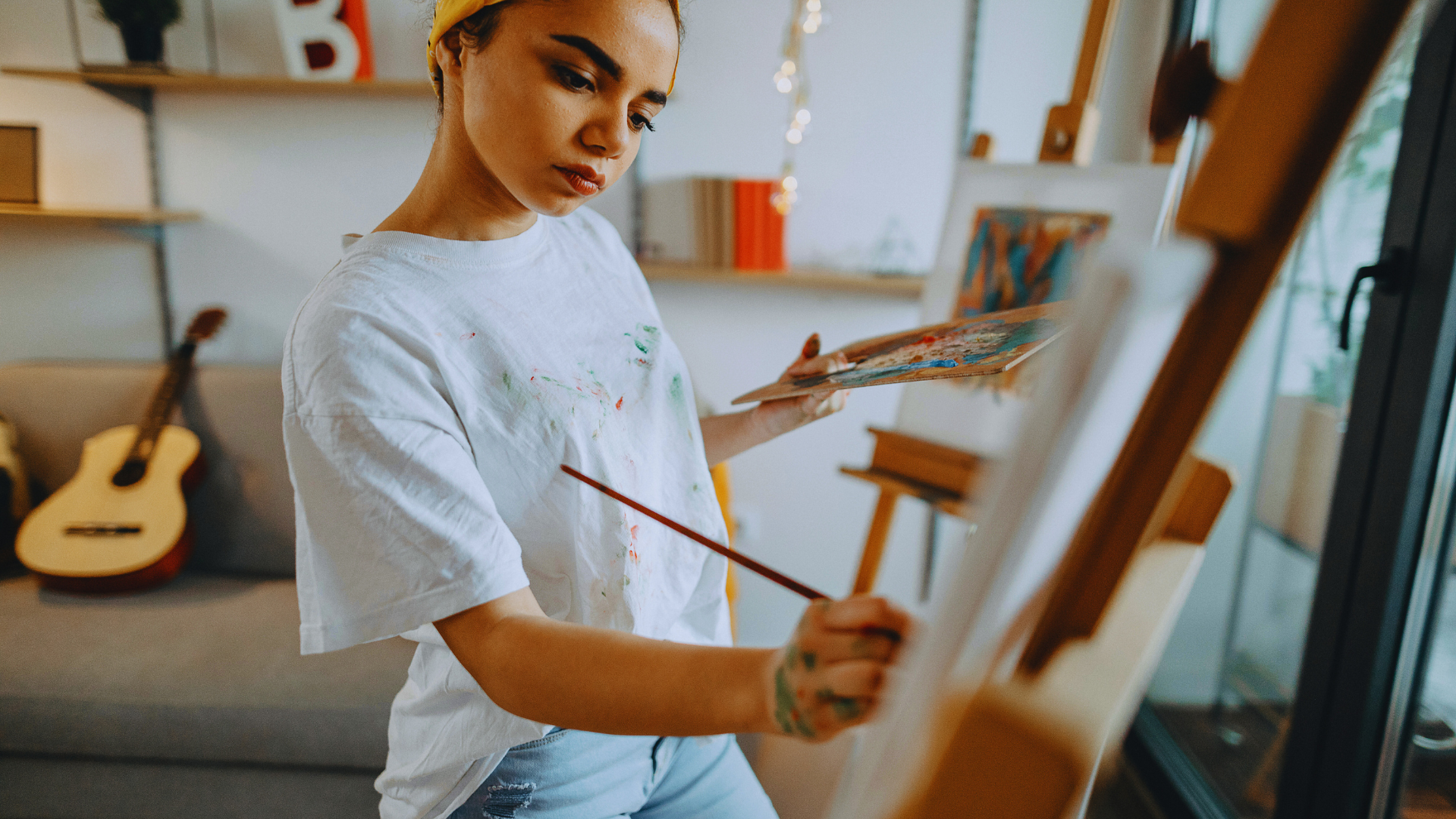Music serves as a powerful catalyst for creativity, unlocking new avenues of thought and expression. When individuals immerse themselves in sounds that resonate with them, they can enter a flow state—a mental zone where focus and productivity soar. This flow state not only enhances creative output but also allows individuals to tap into their full potential, turning abstract ideas into tangible results.
For many, background music can be the key to fostering an environment conducive to creative work. It creates a bridge between thought and action, encouraging a seamless exchange of ideas. Those who leverage music effectively often find they can maintain deep concentration, enabling a more profound engagement with their creative tasks.
Experiencing this flow state through music ultimately transforms the creative process. By understanding the relationship between rhythm, melody, and creativity, individuals can maximise their productivity and uncover insights that might otherwise remain hidden.
Understanding Flow State in Music and Creativity
The flow state is a crucial concept in music and creativity, highlighting how individuals can immerse themselves deeply in their craft. This section will explore its definition, the core elements that characterise the flow experience, and the contributions of Mihály Csíkszentmihályi in developing flow theory.
Defining Flow State in Creative Pursuits
Flow state, often referred to as being “in the zone,” occurs when an individual is fully engaged in a creative activity. This state is characterised by intense focus and enjoyment, leading to a sense of personal control and fulfilment.
In music, this experience can manifest during practice or performance, where the musician feels a seamless connection with their instrument. Creative pursuits like painting or writing can evoke similar feelings, as the individual loses track of time and is absorbed in the task at hand.
Key Elements of the Flow Experience
Several critical elements define the flow experience:
- Challenge: The task must present a moderate challenge, fitting the individual’s skill level.
- Skill Level: A balance between challenge and skill is essential; too much challenge may lead to frustration, while too little may cause boredom.
- Clear Goals: Specific objectives guide the individual’s focus during the creative process.
- Immediate Feedback: Real-time responses during creative activities enhance engagement and motivation.
Being in a flow state fosters an autotelic experience, where the activity is rewarding in itself, independent of any external rewards. Musicians and artists often describe this state as deeply satisfying and transformative.
The Role of Mihály Csíkszentmihályi in Flow Theory
Mihály Csíkszentmihályi, a renowned psychologist, pioneered the study of flow theory. His research highlighted how individuals experience deep enjoyment and engagement during art and music.
He identified flow as a crucial aspect of achieving creativity and personal growth, emphasising the importance of finding a balance between challenge and skill. Csíkszentmihályi’s work laid the foundation for understanding how creativity can flourish in a flow state, influencing countless artists and musicians in their pursuit of excellence.
The Science of Achieving Flow in Music
Achieving a flow state while engaging with music involves complex neurological processes. These processes lead to heightened creativity, enhanced focus, and emotional engagement. Understanding the underlying neuroscience can help individuals optimise their creative experiences.
Neuroscientific Insights into the Creative Mind
Research reveals that creativity in music activates specific brain regions associated with emotion, memory, and concentration. The interplay between the prefrontal cortex and other regions fosters the spontaneous generation of musical ideas.
During creative activities, neural pathways become more efficient, allowing for quicker connections between ideas and sounds. This neural efficiency is crucial for musicians seeking to sustain their flow state.
Dopamine and the Neurochemistry of Flow
Dopamine plays a significant role in achieving flow by influencing motivation and reward. This neurotransmitter is released during enjoyable activities, including music-making. It enhances focus, making it easier to tune out distractions.
Increased dopamine levels can lead to heightened emotional responses and creativity. Musicians often report feeling more connected to their work during these heightened states, reinforcing the positive feedback loop associated with flow.
Prefrontal Cortex and Default Mode Network
The prefrontal cortex is crucial for decision-making and self-monitoring. During flow, its activity decreases, allowing for a reduction in self-criticism and an increase in spontaneity. This reduction enables musicians to engage more freely with their creativity.
In contrast, the default mode network (DMN) activates during periods of rest and daydreaming. This network’s involvement can foster a relaxed mindset, facilitating the transition into flow. Balancing activity between the prefrontal cortex and DMN can thereby enhance creative performance in music.
Practical Strategies for Finding Your Flow State as a Musician
Achieving a state of flow as a musician involves creating the right environment and mindset. Through specific strategies that focus on motivation, practice, distraction management, and feedback, musicians can enhance their creative process.
Setting Challenges and Maintaining Motivation
Musicians can find their flow by setting achievable challenges that keep them engaged. These challenges should align with their current skill level to promote growth without causing frustration.
Examples of Challenges:
- Learning a new piece of music.
- Improvising within a specific scale or chord progression.
- Setting performance goals, such as playing for an audience.
Maintaining motivation is essential. Musicians might create a practice schedule, using a mix of techniques to keep their sessions fresh and inspiring. Establishing mini-goals can foster a sense of accomplishment that fuels motivation and helps to push through difficult phases.
Developing Expertise and the Role of Practice
Expertise is key to achieving flow. Musicians must commit to regular practice, focusing not only on repetition but also on self-monitoring their progress. Quality practice enhances clarity and allows for personal expression.
Strategies for Effective Practice:
- Use a metronome to improve timing.
- Record practice sessions to identify areas needing improvement.
- Break down complex pieces into manageable sections.
By developing a strong foundation of skills, musicians can navigate the complexities of their art with confidence. This mastery reduces self-consciousness and allows for deeper creativity.
Managing Distractions and Self-Consciousness
Distractions can hinder a musician’s ability to enter flow. Creating a dedicated practice space can minimise interruptions. This space should be free from noise and visual clutter to promote focus.
Musicians should also address self-consciousness. It can be helpful to set aside time for experimentation, encouraging a playful and risk-taking attitude. Techniques such as deep breathing or mindfulness can help calm the inner critic, enabling a more relaxed state when performing or practicing.
Harnessing Feedback and Immediate Response
Immediate feedback plays an integral role in honing a musician’s skills. Engaging with a teacher or mentor can provide valuable insights and constructive criticism. Musicians should welcome feedback as a tool for improvement rather than a source of anxiety.
Methods to Receive Feedback:
- Participate in group jam sessions to benefit from peer input.
- Use technology, such as apps, that provide real-time analysis of performance.
Cultivating confidence through the integration of feedback helps musicians refine their skills and solidify their flow experience. Consistent feedback loops encourage growth and foster a sense of community within the music-making process.
Maximising Creativity, Productivity, and Wellbeing Through Flow
Achieving a flow state can greatly enhance creativity, productivity, and overall well-being. Through structured approaches and personal control, individuals can foster an environment that promotes happiness and artistic expression.
Enhancing Musical Enjoyment and Autonomy
Music producers can boost their creativity by engaging in activities that enhance enjoyment and autonomy. Freedom in music production allows artists to explore improvisation and create unique melodies. This autonomy fosters a deeper connection to their work, resulting in more meaningful creative outputs.
Incorporating various instruments can further enrich this experience. By experimenting with different sounds, musicians expand their creative horizons. Tools such as a Digital Audio Workstation (DAW) enable artists to customise their workflow, allowing for greater freedom in expressing musical ideas.
Balancing Passion, Mental Health, and Avoiding Burnout
To maximise productivity, creators need to find a balance in their passion. While pursuing musical goals, they must also remain mindful of their mental health. Continuous pressure to produce can lead to burnout, which ultimately stifles creativity.
Setting realistic deadlines and allowing for regular breaks helps maintain a healthy workflow. Engaging in mindfulness activities, such as meditation or simple breathing exercises, fosters clarity. This approach not only enhances focus but also protects against the emotional toll excessive pressure can create.
Supporting Sustained Creativity and Workflow
Sustaining creativity requires a strategic approach to workflow. Establishing routines that encourage regular creative practice can lead to enhanced output. Scheduling specific times for music production promotes consistency and habit-building.
Incorporating spontaneous improvisation can break the monotony, leading to fresh ideas. Regularly revisiting unfinished projects can also spark new inspiration. This combination of structure and spontaneity cultivates an environment where artistic expression can flourish, ultimately supporting long-term creativity and productivity.

